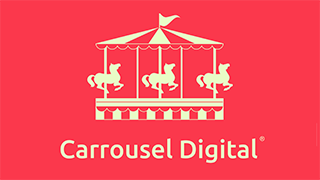Leasing is extremely flexible and could be the perfect solution if much-need new equipment would otherwise be unaffordable, writes the Finance and Leasing Association
As the National Health Service celebrates its 70th anniversary this year, the government’s announcement of £20 billion in additional funding by 2023 was welcome. But the birthday gift included a stern warning – that the NHS would need to be more efficient or the funding increase would be swallowed up before it reached the frontline.
One way to ensure that patients feel the benefit of this extra funding is to make every pound work harder. In a sector where medical and technological innovations can render high-value equipment obsolete within a relatively short period, leasing frequently makes more sense than buying outright. It’s simply not efficient to continue using broken or slow technology in an effort to justify the original investment cost of the equipment – especially when the clinical outcomes of state-of-the-art equivalents would improve NHS productivity and patient care.
What is leasing?
Leasing usually involves paying a regular charge for the use of the asset over an agreed period of time, so avoiding the full cost of buying it outright. The leasing company (lessor) buys and owns the equipment on behalf of the customer (lessee). The customer pays a rental for the use of the equipment over a predetermined period.
There are two main types of lease: an operating lease and a finance lease. An operating lease would be appropriate if the business does not need the equipment for the entirety of its working life. The leasing company will take it back at the end of the agreement and will be responsible for maintenance throughout the lease period. A finance lease would be appropriate if the business intends to keep the equipment for most or all of its working life. As such, finance leases transfer all the rights and obligations of ownership (like maintenance and insurance) to the lessee, and over the lifetime of the agreement, the lessee will have pay at least 90 per cent of the fair value, or market value of the asset.
Leasing is extremely flexible and can be used to fund any asset – from telephones and photocopiers to specialist medical equipment or IT – and it could be the perfect solution if much-need new equipment would otherwise be unaffordable.
Over 90 per cent of asset finance (leasing and hire purchase) providers in the UK are members of the Finance & Leasing Association (FLA) and you’ll find them listed in our Annual Review. Doing business with an FLA member means you are dealing with a reputable firm, whose agreements are subject to the FLA’s Business Code.
Procurement
NHS Supply Chain has been tasked with implementing the Future Operating Model, set up by the Department of Health as a solution to the problem of NHS trusts paying a variety of different prices for the same basic equipment. Part of this model includes Category Towers of procurement consortia that have been contracted by NHS Supply Chain to provide particular types of products. The kind of leasing undertaken by FLA members falls primarily under Category Tower 7, (Large Diagnostic Capital Devices including mobile & consumables). While supportive of the new procurement process, the FLA will be liaising closely with the Department of Health and NHS Supply Chain to keep them apprised of our members’ feedback on the ongoing implementation.
IFRS 16
Early in 2017, the EU endorsed the new international accounting standard for lessees, IFRS 16 – with an implementation date of January 2019. We have been discussing with the government the possible effects of aligning public sector accounting with IFRS 16, and our main point is that any changes must improve the current situation which treats finance leases as debt – so their use by schools and non-trust hospitals is only allowed with the permission of the Secretary of State.
The government’s recently published consultation paper on public sector accounting contains proposals that would have the effect of putting all leases on the lessee’s balance sheet, and which would abolish the old distinction between finance and operating leases.
While, on the face of it, this measure looks like it ought to allow all kinds of leases to be used by the public sector, we need to make absolutely sure that this is what the government actually intends, and we are pursuing the point with them at the moment.
How big is the market?
In 2017, our members provided £128 billion of new finance. £32 billion of this was provided to businesses and the public sector, representing over a third of the UK investment in machinery, equipment and purchased software.





